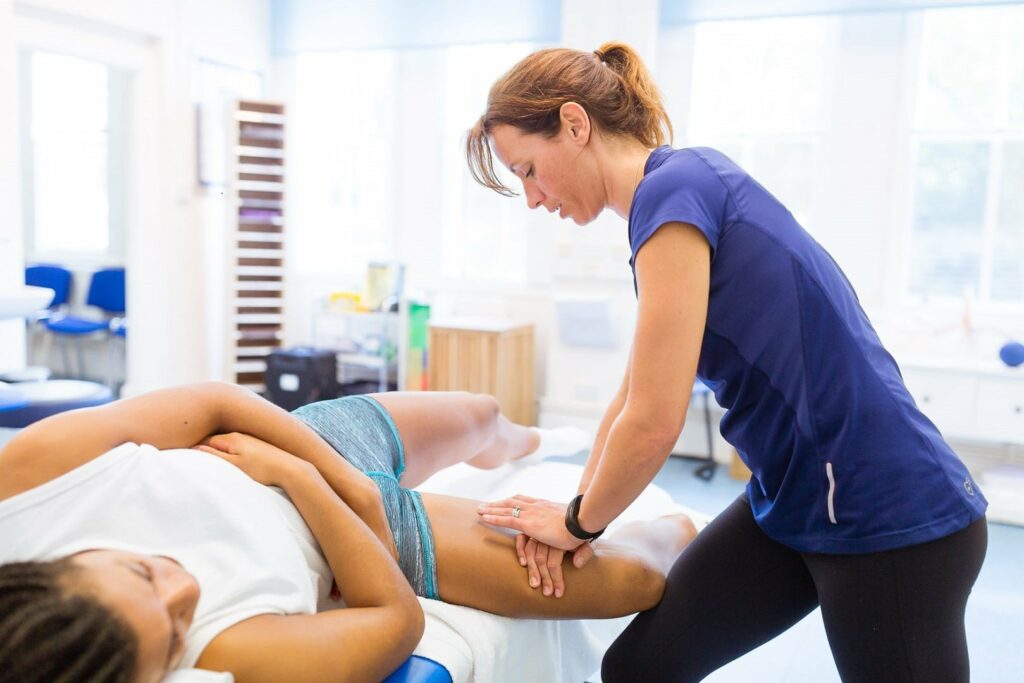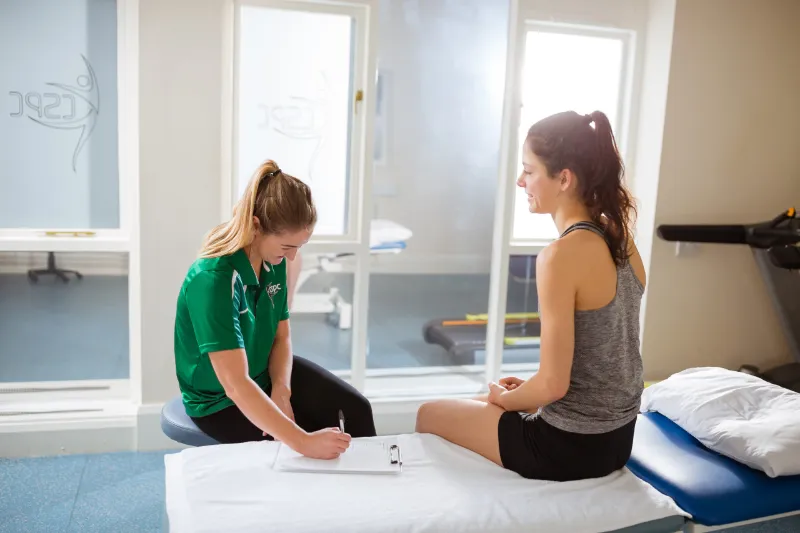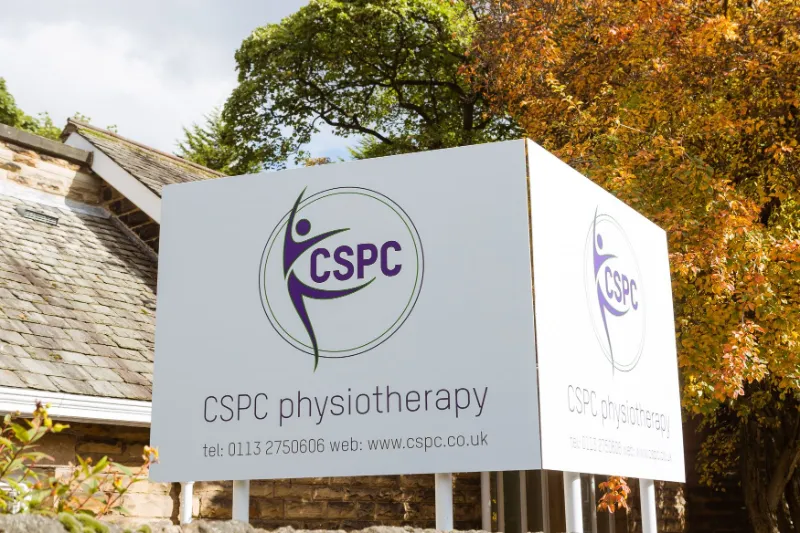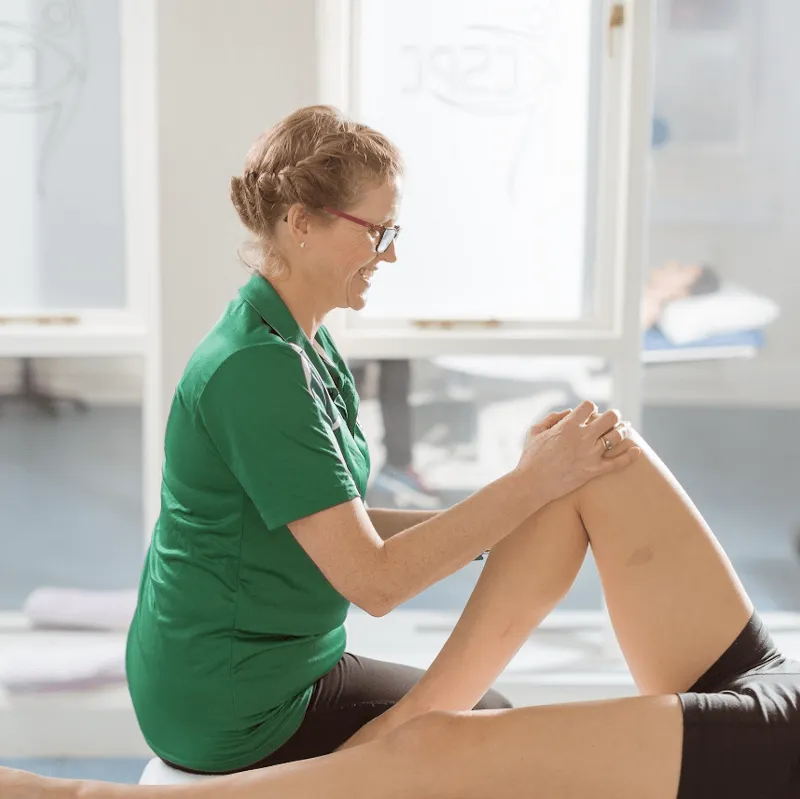Shoulder pain
There are a variety of differing causes of shoulder pain which often overlap and are multifactorial. Below is a brief list of the common issues that we see in clinic. Physiotherapy can help to work out why your shoulder is sore, and how to address it.

Shoulder pain is often commonly due to poor posture, which usually presents with tight muscles at the front of the joint, round shoulders and overstretched weak muscles at the back of the shoulder joint, along with a forward head posture.
Much of the stability in the shoulder comes from the muscles around it. There are four rotator cuff muscles which, along with other muscles around the shoulder can have strains, tendon tears and weaknesses, all of which can affect how the shoulder moves and the stability of the shoulder. This can lead to shoulder pain.
Bursitis in the shoulder, which may also be called subacromial bursitis, or subacromial impingement, is inflammation of a small fluid filled sac (the bursa) under the end of the collar bone which can get pinched between the tendons and the bones. This can be caused by tightness or alignment of the shoulder, and occasionally because of bone spurs or bony overgrowth in the shoulder.
If causing pain, these often need to be removed through surgery, and can be confirmed by clinical examination along with an x-ray.
Calcium deposits can be laid down in the tendons of the rotator cuff and can cause pain on movement. This can be identified on x-ray. They can respond well to shockwave and physiotherapy.
This is a nasty injury where the bone in the upper arm (the humerus) pops out of the joint. It is extremely sore and needs emergency medical attention. A shoulder joint subluxation is a not as severe as a dislocated shoulder, and in some cases may pop back into the joint, although ideally would be checked by a doctor. A dislocated shoulder usually needs immobilising to allow any torn tissues to heal, but in both cases, this type of injury will need strengthening and stability work to help prevent recurrence.
A labral tear is an injury to the cartilage within the joint. Two of the most common tears are the SLAP and Bankart lesions. Tears will usually need surgery to maintain the health and stability of the joint, and physio is an important part of the post operative recovery.
This can feel sharp or tingly and is often referred from the neck. It may also be from lack of nerve mobility between the neck and arm.
Frozen shoulder or adhesive capsulitis involves pain and extreme stiffness in the shoulder joint. Typically, this starts slowly and then gets worse, and often the range can become very limited, and the shoulder very sore. Treatment includes mobilising the joint and keeping the soft tissues mobile, along with the prescription of home exercises. Sometimes it can be useful to have a steroid injection into the joint.
This is when the surfaces of the joint become worn, with changes to the cartilage. Symptoms may include pain in the shoulder joint, stiffness and reduced joint range. Ideally managed with exercises that maintain range and strength without irritation.
How do we help you get back on the road to recovery?
Here at CSPC we have a wide range of treatment options to help address your shoulder pain. The physiotherapist will take a thorough case history and assess all of the areas listed above. Treatment can include
- Manual therapy, joint mobilisation and postural work
- Soft tissue treatment and sports massage work
- Strengthening exercises
- Specific and focused home exercise programme
- Shockwave Therapy
- Taping and sports strapping
- Training advice and load monitoring
- Onward referral for imaging or consultants if required (self-funded or via private medical insurance or a letter to your GP)
To book an appointment, please call reception on 0113 2750606
MEET THE TEAM
Constantly challenging ourselves to be the best
We are dedicated to continually training, challenging and developing ourselves to ensure we are at the leading edge of our profession. The best practices are constantly evolving and Alison leads the internal training at the clinic, working with the team, in small groups and individually ensuring that all staff provide the same high standards of care. All members of CSPC staff also attend regular external training. Many of these courses are run at the clinic with external educators to further expand our knowledge and experience.
GET IN TOUCH
If you have any questions, are ready to book an appointment or are planning your trip to see us then you’ll find all the information you need below.
See why patients
love CSPC Physiotherapy
"Amazing physios! I started coming here when they were located in Leeds Met. Now moved out to a new building by the Village gym/hotel. Every physio I have seen has been nothing short of amazing.....very knowledgeable and always seem to fix the problem!"
Chris Allen
"Rose came highly recommended to me from a sports therapist who was also a high level athlete. She clearly cares about getting her patients back to full health ASAP. She kindly reviewed a list of my injuries prior to booking anything with her so she could appropriately advise on who i should see. From my brief conversation with her i could tell she cared and had extensive knowledge about biomechanics and getting to the root cause of the problem."
Drew Norcup
"I was attended to by Louisa who was great . She was very thorough and methodical in getting to the root of my problem and gave me effective treatment. At the end of my treatment I was given a plan to follow. There was no pressure to book a follow up appointment either.
I would definitely recommend to anyone contemplating going. My only regret is that I did not go earlier."
James Ahmad
"Absolutely the best practice I’ve been to. Extremely experienced and expert physiotherapists. Particularly the folks who’ve worked with British Triathlon and elite athletes. Very happy with the expertise, treatment and longer mire valuable sessions. A very refreshing and reassuring approach to care"
Andrew Bannister
"Wow I have been other physiotherapy the only did basic wok on my shoulder . But janat who did look at my shoulder . She trying to find out what is causing the shoulder pain . She did found out after several exercise . She is amazing what she dose . I am glad I have been recommend to cspc. Let’s hope none one suffer shoulder injury but if you experienced any body pain . Janat is the one . Well done guys finally I can go back to gym "
Sarbast Mohammed
Previous
Next






